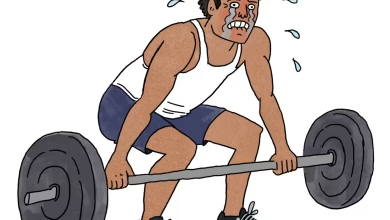Terrible Things Happen—But You Can Bounce Back
Life's curveballs can gut us. But embracing pain, untangling guilt, and having a chinwag with your emotions might just be the comeback we all need, says therapist Moya Sarner.
The Harsh Truth… With Some Hope
Let’s cut to the chase: life can chuck things at us harder than a roo on the freeway. Abuse, loss, infertility, injury, anxiety—often it feels like there’s no turning back. But therapist and Guardian columnist Moya Sarner says it is possible to claw your way back, even from the darkest pits.
Sarah’s top takeaway? You’ve got to feel the pain to heal it. Run from it, and you stay stuck—tap into it, and you’re on the move.
Trauma & Recovery: The Professional Rundown
| Stage | What Happens | Impact on You |
|---|---|---|
| Avoidance | Anxiety, distraction, physical symptoms replace emotional pain | You’re stuck in limbo, not even living |
| Acknowledgement | Naming guilt (“It’s not your fault”), sharing the heartbreak | Begin to unpack trauma, free up energy |
| Acceptance | Realising luck—not blame—brought the pain | Clears the guilt fog |
| Integration | “Increase capacity for suffering” (Wilfred Bion) | Greater self‑awareness, compassion, living |
Moya’s Straight Talk (with Aussie Flair)
- Feeling over fleeing: It’s easy to chase away anxiety by focusing on symptoms, but the real stuff—grief, loss—demands recognition.
- Guilt: The tricky crutch: Holding on to guilt can feel safer than admitting “stuff happens”—randomly and unfairly.
- Not your fault mantra: Unlike that iconic Good Will Hunting moment, it’s not someone else who tells you—it’s your own internal wake-up call that sets you free.
- Bad news with upside: The harder it hits, the deeper the potential for growth—when you sit with the suck, you build empathy and resilience.
Trauma → Recovery Journey
A – Avoidance
What it looks like:
You’re drowning in anxiety, but it’s not about what’s really hurting. Sleepless nights, racing thoughts, a thumping chest—classic distractions.
Reality check:
You’re not feeling your actual grief—you’re dodging it like a spider in the shower.
B – Acknowledgement
What it looks like:
Naming the pain. Maybe just a whisper at first. “I miss them.” “I feel lost.” “I’m grieving what never was.”
Reality check:
This step cracks open the door. It hurts, sure—but it’s honest.
C – Acceptance
What it looks like:
Realising the pain wasn’t your fault. Not all tragedy has a reason—or a scapegoat.
Reality check:
Blame might feel like control. Letting go of it is terrifying… and freeing.
D – Integration
What it looks like:
You’re not “over it”—but you’re with it. The trauma becomes part of your story, not the whole plot.
Reality check:
This is where healing blooms. You carry the scar, but now it teaches you compassion, not just pain.
Final Thought
This isn’t fluff, life-hack stuff. It’s raw, honest, everyday courage—turning towards your pain, not running from it. That’s where the movement starts. And as Moya says, from suffering can grow something better—grace, connection, a life lived fully, mess and all.





